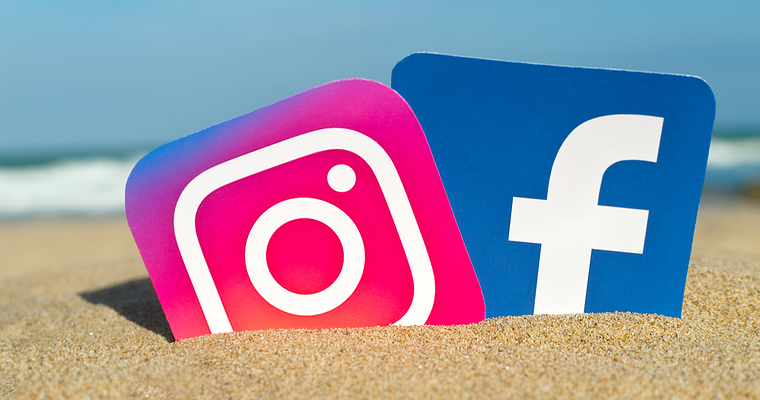Do you have concerns about the efficacy of the ads on Facebook and Instagram? Do you wish to learn what works well for other businesses?
Over the years, there have been ups and downs for many social media platforms, but Facebook has remained a major player. With almost 3 billion active users each month, Facebook is by far the most widely used social networking site. This indicates that it’s a fantastic location for your company to be present. However, you must learn how to develop an Instagram and Facebook Marketing marketing plan that will be effective.
In this post, learn about three Facebook and Instagram ad strategies that have been proven to be effective. Instagram and Facebook Marketing are essential. Facebook is the most popular social networking platform worldwide, with 2.29 billion daily active users.
Additionally, it’s not just embarrassing vacation photos. 53.2% of internet users between the ages of 16 and 24 primarily use social media as a platform for brand research. A local business page is also visited by 66% of all Facebook users at least once every week.
It is a proven fact that you must be on Facebook.
But what should you do first? Do you need to run ads? What should you post about? Are business Pages evidence of metaverse participation?
To help you achieve your goal Instagram and Facebook Marketing have been deconstructed into simple chapters by veteran Facebook marketers at Llama Lead Gen. Llama Lead Gen has offered advice on how to succeed with your Facebook and Instagram marketing approach after investing millions in advertisement spend and optimizing several pages from different verticals and markets.

Facebook Marketing: What is it?
Facebook marketing is the process of using a business page on Facebook to advertise a company, its goods, and its services. Brands can turn their company page into a type of second website and even conduct sales thereby completely optimizing it.
Facebook marketing strategies could consist of:
- Original text, images, or videos
- Enhanced or compensated text, image, or video content
- Facebook Reels and Stories
- Instagram adverts
- Instagram Groups
- Giveaways and competitions
- Chatbots or auto-responders for Facebook Messenger
- Using Influencers in Marketing

Seven simple steps to Developing a Facebook &Instagram marketing strategy
1) Clear goals for your Facebook marketing.
Any marketing strategy must start by establishing the right goals. These goals and objectives will be an essential yardstick for measuring the success of your Facebook strategy. But money isn’t always the problem. The following are additional usual goals for a Facebook page:
- amplify brand awareness
- Improve the way you treat customers.
- On all social media platforms, maintain a consistent brand image.
- more people to a particular place
You may grow your consumer base, increase exposure, and give your audience more resources with the aid of Facebook and Instagram. Make Facebook your go-to source of information by adding all the necessary information about your company, developing your social media store, and more. This effectively turns Facebook into a second website. Social media platforms like Facebook may be a terrific resource for boosting recruitment efforts and finding top talent more quickly, which is why social recruiting is continually gaining in popularity. You may also post job postings on Facebook to make it even simpler to attract excellent talent.

2) Recognize your target market
Before you do anything, research the Facebook and Instagram preferences of your ideal potential customer. Create content and marketing strategy based on that. It is critical to understand who uses Facebook and how your target audience is segmented before deciding which Facebook and Instagram marketing methods to use and how.
On the other hand, if the same seller had been selling ice cream with modern-looking liquid nitrogen decorations, chocolate, and other high-end items, he might have been more interested in appealing to young people as opposed to the elderly.
Start with Sprout Social’s in-depth research of social media demographics for a general grasp of who is using the platform and how. Now, his or her ideal client is an upper-middle-class individual who values health and hygiene and favors conventional flavors like Rajbhog, Vanilla, Badam Pista, etc.
On the other hand, if the same vendor sold ice cream with liquid nitrogen garnishes that looked more contemporary, and had chocolate and sophisticated stuff, he might have targeted young people rather than the elderly.

3) Develop a content strategy
As a brand, you must never lose sight of the fundamental principle of what social media networks are all about: discussion and interaction should never be neglected. Create content that encourages audience participation, but doesn’t be hesitant to explicitly ask for participation as well. Have your audience vote on something in response to your content. Pose inquiries. Post polls. The options are unlimited, and Facebook makes it simple to start growing engagement and community. You’ll post what your audience wants, aren’t you sure? based on the extensive research you conducted in Step 1? But creativity is welcomed. Combining your knowledge of your target audience. Here are some guidelines for traditional social media content strategy:
1). The rule of thirds states that one-third of your content should be your ideas or tales, one-third should be direct audience contact, and the final third should be promotional content.
2). The 80/20 guideline states that 80 percent of your material should be informative, entertaining, and educational, while 20 percent can be promotional.
Conclusion
However, you might modify these strategies to use them on other social networks. They were created to work with the specific ad kinds and content trends on both platforms. While some of the tactics are quicker, some demand technical competence and take more time. Any business, in any industry, can use them all. All ages use Facebook, but older users are particularly fond of it, which is wonderful news for advertisers who have had trouble reaching this market. It’s not simply a platform for an older audience; it’s also a great platform if your business sells to consumers. View a successful ad campaign we created for a moving company client to promote the use of their moving services. On the other hand, Instagram is a platform that appeals to users who are always on the go. The social media platform was designed specifically for mobile devices, so a range of advertisements may be swiftly and readily presented to prospective buyers.




